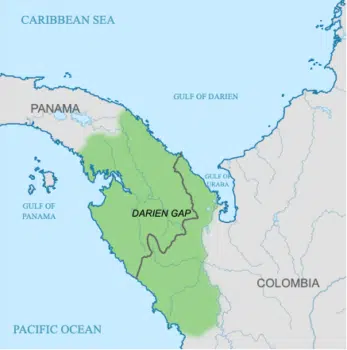The Biden Administration announced on June 4 that it was issuing a presidential proclamation and an interim final rule that further restricts access to asylum at the southern border of the United States. The move is the latest in a series of increasing efforts to dissuade migrants from crossing the border in their quest to access asylum, which is an internationally protected practice.
Immigration courts in the United States are currently facing a massive backlog in cases, but the announcement has raised concern among asylum rights advocates.
“This executive action will increase the number of asylum seekers forced to wait in dangerous conditions in Mexico,” said Alba Jaramillo, co-chair of the Southern Border Communities Coalition and co-executive director of the Immigration Law & Justice Network, in a press release following the President’s proclamation.
The Biden Administration should not cave into fear-mongering and xenophobic political gamesmanship at the expense of people’s lives and our ideals. We call upon the Biden Administration to instead recenter the conversation around dignity and protect the universal human right to asylum.
As the American Immigration Council points out in their fact sheet about the new Executive Order, the change will prohibit asylum seekers from being granted asylum if they illegally crossed the southern border.

Map of the Darién Gap.
The measure will also expedite the removal process, with migrants either being returned to their home country or to Mexico to wait for an asylum interview appointment. Additionally, it will raise the bar on a migrant’s ability to express fear to Customs and Border Protection agents as part of the “shout test,” where a migrant expresses credible fear to agents in order to access asylum options, and block them from having legal counsel present during their fear screenings.
And as Yael Schacher, an immigration historian and director for the Americas and Europe at Refugees International, tells The Progressive that it is “certainly not a sustainable solution.”
The Biden Administration had stated weeks prior that it would be seeking to place restrictions on the asylum system. Following the Biden Administration’s Executive Order, the new measure went into effect at 12:01 a.m. on June 5.
The Biden Administration’s new measure already faces legal challenges. Axios reported on June 4 that the American Civil Liberties Union will file a lawsuit against the Biden Administration in order to challenge the Executive Order.
“We intend to sue,” Lee Gelernt, an ACLU lawyer who successfully argued a similar challenge during the Trump Administration, told Axios.
A ban on asylum is illegal just as it was when Trump unsuccessfully tried it.
The ACLU did not immediately respond to a request from The Progressive for comment.
Currently, the only way for an asylum seeker to access the asylum system in the United States is to utilize the Customs and Border Protection agency’s CBP-One app. However, the app, which was launched in 2022, has been plagued by long wait times, drawing comparisons to a lottery.
The Biden Administration’s new measures do not increase the number of daily appointments on the CBP-One app, which remains at only about 1,450 per day. According to The Guardian, an average of 7,240 people arrived at the border each day between May 2023 and January 2024. The new order also does not expand the number of ports of entry where immigrants can obtain an appointment through the app.
“CBP-One is the only way to get access to asylum at the border,” Schacher says.
Because you have to get an appointment to come in, if you just walk up to a Port of Entry without an appointment, you’re not going to be eligible for asylum.
She adds,
I’m actually really surprised that they haven’t increased the number of CBP-One appointments and increased the [number of] Ports of Entry at which you can use [these appointments]. There’s only eight ports right now.
Following the issuance of the presidential decree, Schacher points out that there will likely be a short-term decrease in CBP agent encounters with migrants along the border, as migrants will be figuring out new options.
“If encounters go up again in the summer and the weeks before the election, I think the Biden Administration will be asking Mexico to increase its [immigration] enforcement,” Schacher says.
In recent months, encounters along the border have been falling ahead of the announcement of Biden’s Executive Order.
But as the Biden Administration moves to further limit access to asylum with its June 4 proclamation, there is substantial fear that these new measures will force migrants and asylum seekers to use more dangerous routes in hopes of entering the United States. Meanwhile, the southern border region has seen a dangerous rise in temperatures.
“There’s more of an incentive to try to evade border patrol,” Schacher says.
And people might be crossing in more and more dangerous places, and the heat is going up. So we can see more deaths if people try to evade the CBP.
This all comes at a time when there is a historic movement of migrants across the hemisphere.
In 2023, an estimated 520,000 people crossed through the dangerous Darién Gap, a region in Panama and Colombia which separates South America from Central America, as they sought to reach the United States. The Panamanian government’s immigration agency estimates that more than 170,000 migrants have already crossed through this route in the first five months of 2024.
The current movement of people is driven by a regional political crisis, climate change, authoritarianism, and the lingering economic crisis brought about by the COVID-19 pandemic. But the hemisphere has also become a key route for migrants from China, India, and several African nations as they seek to reach the United States.
“There is a displacement crisis in our hemisphere, with tens of thousands of people on the move,” Schacher says.
There is a need to figure out what to do. And it needs to be innovative when it comes to managing all these folks rather than putting up more bars and bans.
Jeff Abbott is an independent journalist currently based out of Guatemala. “The Other Americans” is a column created by Abbott for The Progressive on human migration in North and Central America.

